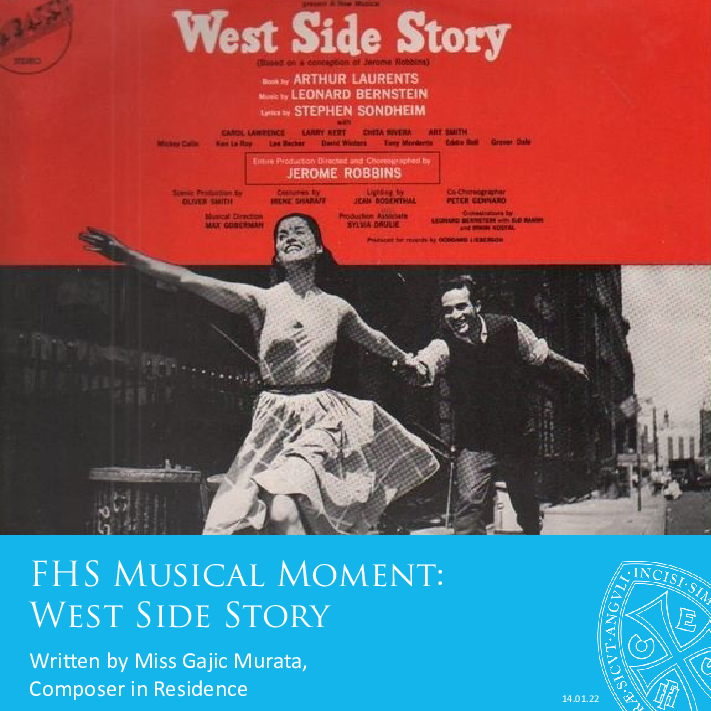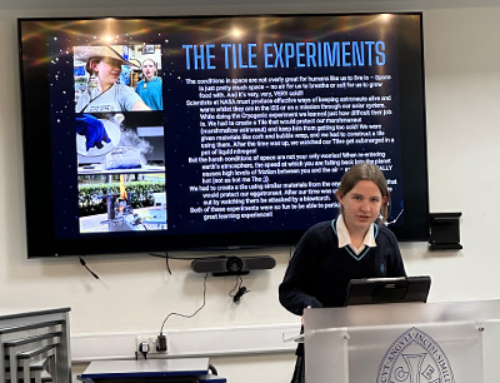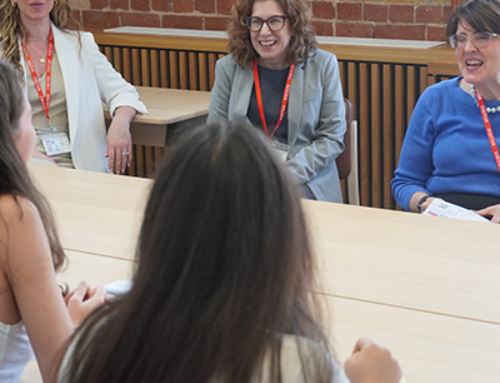With the Stephen Spielberg film of West-Side story having come out in December, I thought it would be interesting to look at the original Broadway show and discuss what has made it one of the most successful musicals in history.
‘West Side Story’ is a musical conceived by Jerome Robbins with music by Leonard Bernstein and lyrics by Stephen Sondheim. Inspired by William Shakespeare’s ‘Romeo and Juliet’, the story is set in the mid-1950s, Upper West Side Manhattan in New York City, which was a multiracial, blue-collar neighbourhood. The music and story explores the rivalry between two gangs, the Jets and the Sharks (white Americans and Puerto Ricans, respectively). The protagonist, Tony, a former member of the Jets, falls in love with Maria, the sister of Bernardo, who is the leader of the Sharks. Together, the two young teenagers explore their love for each other and attempt to overcome the rivalry between their two races. The musical comments on social problems and racism through it’s music and extended dance scenes, a turning point in musical theatre.
Many of the songs belonging to ‘West Side Story’ have been subsumed into popular culture and are almost instantly recognisable, for example, ‘America’, ‘Maria’ and ‘Tonight’ to name a few. Bernstein uses one interval as his main motif – a tritone (albeit a rather unusual interval of choice due to its implication of dissonance and it being previously known as ‘the devil’s interval). The tritone is particularly apparent in ‘Maria’ as the song’s infamous opening two notes use the interval. However, the tritone appears long before Tony meets Maria and it can be heard in the ‘Prologue’ and ‘Jet Song’. Notably, the interval doesn’t resolve like it does in ‘Maria’, thus Bernstein uses the tritone to establish tension early on in the musical and creates an ominous atmosphere. Following the prologue, we meet Tony, a former gang member and one of West Side Story’s two protagonists. The tritone appears once again in Tony’s solo number “Something’s Coming.” However, in this instance Bernstein softens the harsh interval by resolving it by a semitone, which Tony does on “who knows”. Tony has found resolution where the rival gangs could not, both musically and symbolically. In “Maria,” Tony again finds a way to resolve the tritone. It is surprising that Bernstein features the tritone at all in a love song. Perhaps the presence of this uncomfortable interval is an indication that the threat of violence still looms over this relationship. Tony might be oblivious to the possible ramifications of this union. The audience is not.
Unlike most Broadway shows, West Side Story does not conclude with a show-stopping final number. However, there is a great deal of thematic significance contained in the music written for the final moments of the show. In particular, Bernstein’s use of the tritone and the “Somewhere” motif (a rising 7th) may perhaps answer West Side Story’s ultimate question: can love conquer hate?
As Tony lies in her arms, grievously wounded, Maria beings to sing “Somewhere.” Even now, she clings desperately to their shared dream of a better world. But Tony dies before they can finish, and Maria’s dream is shattered. The orchestra then picks up the tune, but this too is interrupted. It seems that Maria has finally given up on the desperate hope represented by the “Somewhere” theme.
With catchy melodies and Bernstein’s treatment of tension and resolution in his music has far-reaching implications and is highly symbolic as it’s still relevant today in matters of society and eradicating racism.
If you are interested in learning more about the music of West Side Story, I highly recommend watching the following documentaries about it, which I have attached in the links below:
LEONARD BERNSTEIN (Conducts) – West Side Story (1985) – YouTube
Kiri Te Kanawa – The Making of West Side Story Documentary – YouTube
Maki Gajic Murata, Composer in Residence














